Decoding Keratosis: Skin Secrets Your Dermatologist Wants You to Know
Keratosis pilaris (KP) is a common skin condition characterized by the appearance of small, gooseflesh-like bumps on the skin, often with varying degrees other signs of redness or inflammation. There are different types of keratosis pilaris, each with its own distinct characteristics:
- Keratosis Pilaris Rubra (KP Rubra): This type presents as red, inflamed bumps that can appear on the arms, head, or legs.
- It is associated with more prominent erythema and widespread skin involvement.
- Keratosis Pilaris Alba (KP Alba): This variant is characterized by rough, bumpy skin with no irritation. It typically appears as small, white or flesh-colored bumps.
- Other Variants: There are other less common variants of keratosis pilaris, such as ulerythema ophryogenes and keratosis pilaris atrophicans faciei, each with its own unique presentation and characteristics.
Keratosis Types: Actinic and Seborrheic
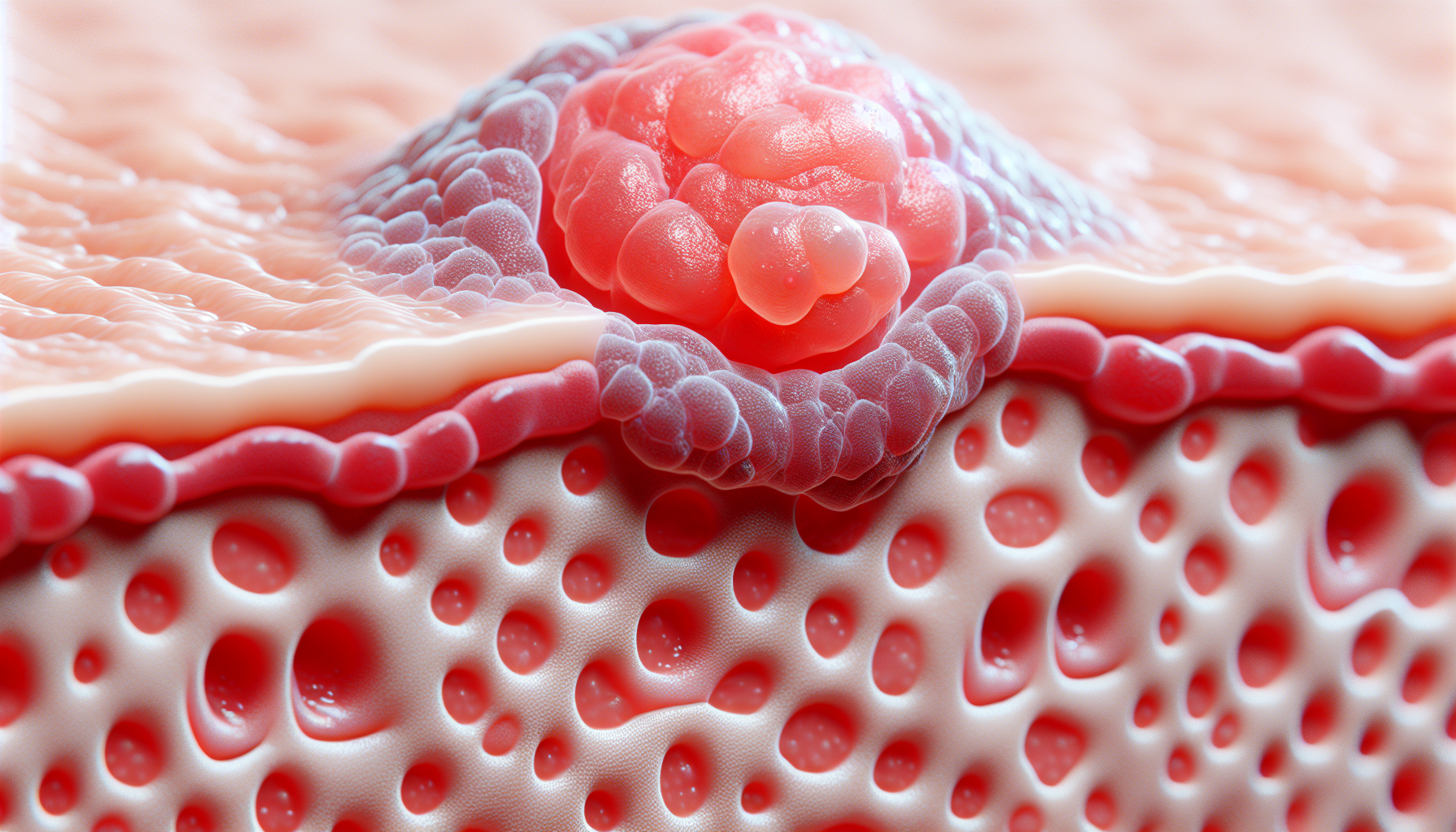
Keratosis, whether actinic or seborrheic, primarily affects areas of the skin exposed to the most sunburn itself, such as:
- the hands
- forearms
- shoulders
- ears
- lips
- neck
- scalp
Actinic keratosis, also known as solar keratosis, is a precancerous condition caused by prolonged sun exposure. Early diagnosis and treatment of actinic keratosis, including actinic cheilitis, is essential to prevent its progression into skin cancer. Having an actinic keratosis diagnosed promptly can make a significant difference in your long-term health, especially when actinic keratosis treated effectively with photodynamic therapy.
On the other hand, seborrheic keratosis is a benign skin growth that often appears in middle-aged and elderly individuals. It resembles a mole and is often confused with other skin conditions, including actinic keratosis. However, seborrheic keratosis does not pose a risk for skin cancer, and treatment is usually for cosmetic reasons or if it becomes irritated.
Actinic Keratosis
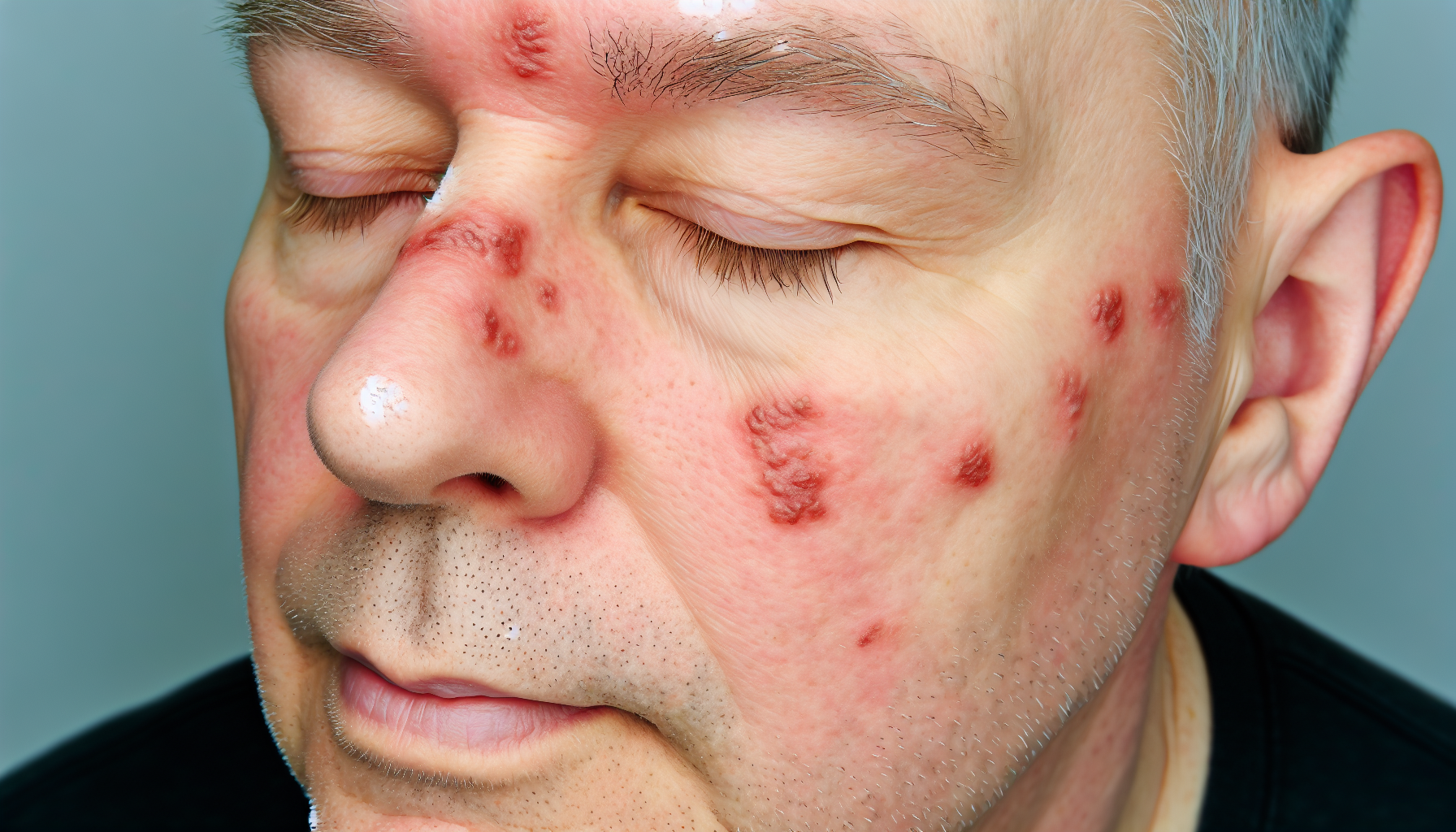
Actinic keratosis (AK) is a skin condition that occurs due to frequent exposure to ultraviolet (UV) rays, primarily from the sun or tanning beds. These UV rays damage the skin cells, leading to the growth of scaly spots or patches on the top layer of the skin. The spots may harden with a wart-like surface. If left unchecked and untreated, they can progress to squamous cell carcinoma, a type of skin cancer.
How Alcohol Consumption Affects Skin Health
Alcohol consumption has been associated with an increased risk of various skin conditions, including actinic keratosis (AK). Research indicates that alcohol consumption may contribute to an elevated risk of developing AK. A systematic review and meta-analysis found that alcohol consumption was associated with a 30% increased risk of AK. Additionally, high alcohol use has been linked to an increased risk of squamous cell carcinoma (SCC) of the skin, which is closely related to actinic keratosis.
The exact mechanisms through which alcohol affects the development of AK are not fully understood, but if we think of our bodies as mostly bacteria, and alcohol as an anti-bacterial… Alcohol weakens the immune system, kills our gut flora and interferes with the body’s ability to repair DNA damage caused by UV radiation, thereby increasing the risk of skin conditions, including AK and skin cancer. Therefore, reducing alcohol consumption may be beneficial in lowering the risk
Some common signs and symptoms of actinic keratosis include:
- Rough, scaly patches on the skin
- Red or pink coloration
- Itching or burning sensation
- Thickening of the skin
- Development of a hard, wart-like surface
Keep in mind that not all actinic keratoses evolve into cancer. The estimated incidence rate of AK developing into squamous cell skin cancer is approximately 3.7% over a period of four years.
Seborrheic Keratosis
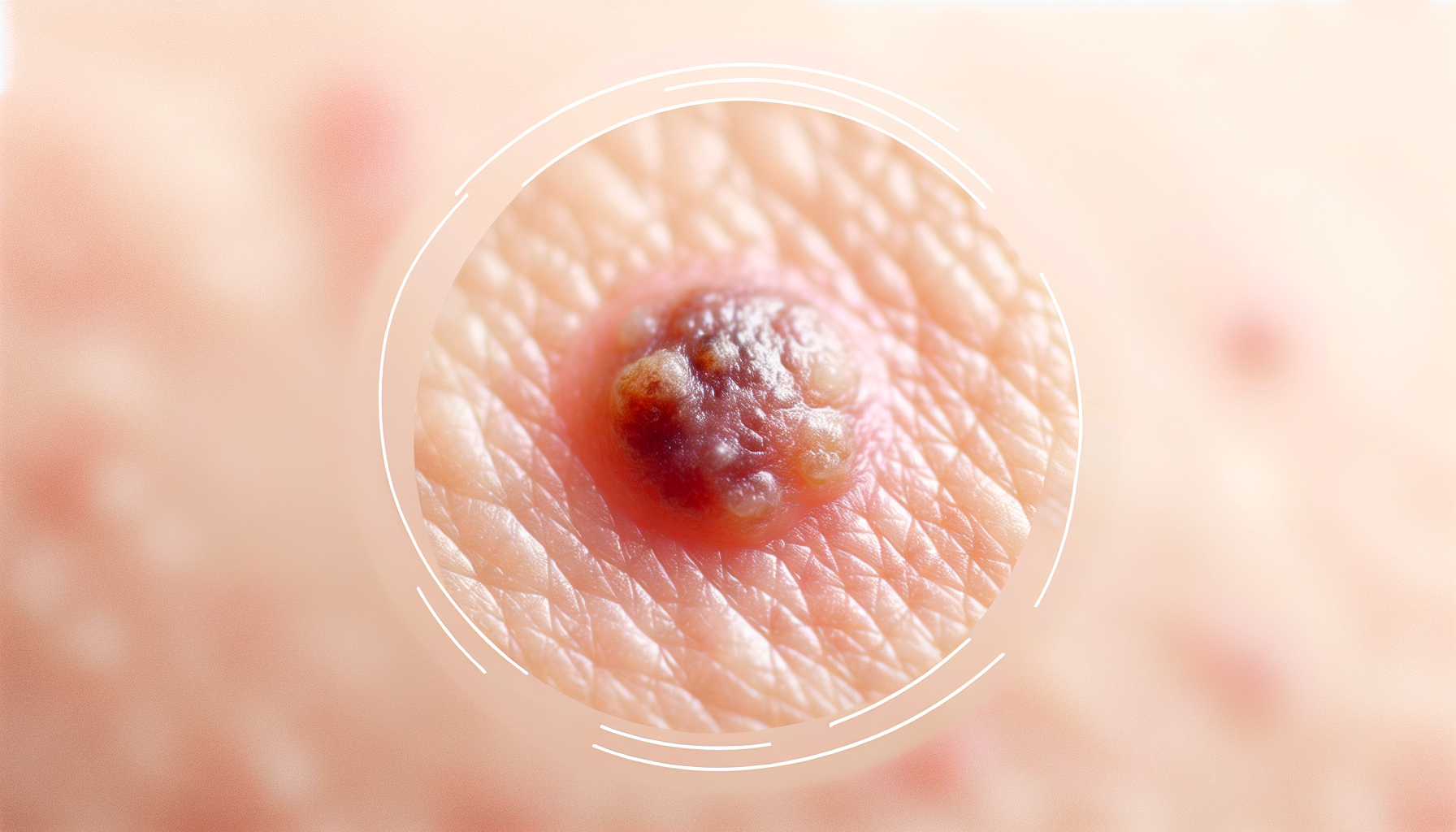
Seborrheic keratosis (SK) is a noncancerous skin growth that often appears as we age. It manifests as:
- Round or oval-shaped patches
- Varying in colour from white to black
- Having a waxy, scaly texture
- Affecting the skin’s texture, making them seem as though they have been ‘stuck on’ the skin.
Despite the exact cause of SK being unknown, a familial predisposition suggests a genetic component. They are quite common, especially in individuals aged 15-30 years, which suggests that these growths often begin development in mid-adulthood. These growths can appear on various parts of the body, such as:
- the face
- neck
- chest
- back
- even on a bald scalp.
Identifying Symptoms of Keratosis
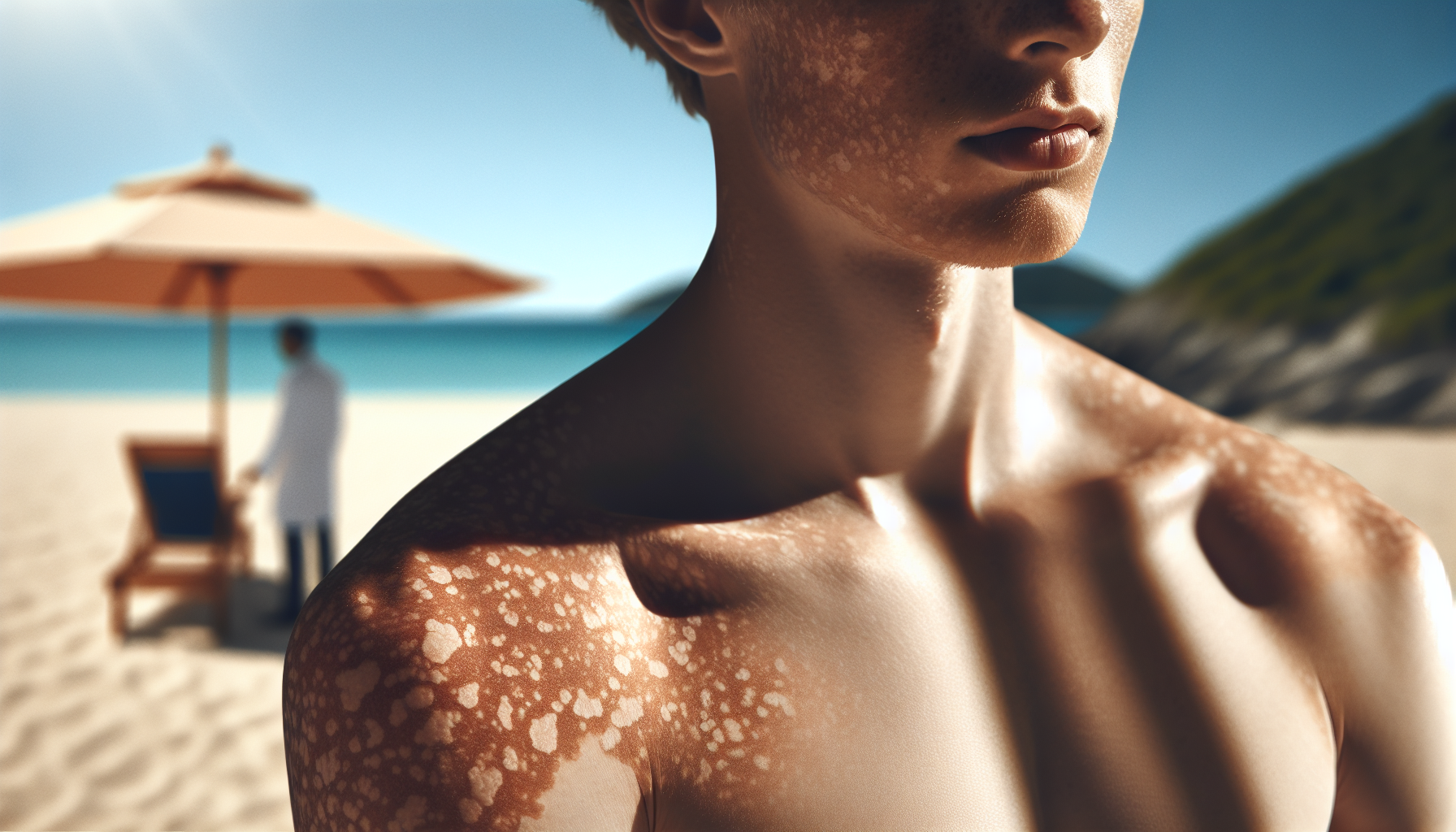
Identifying the symptoms of keratosis plays a vital and key role in its early detection and treatment. Both types of keratosis, actinic and seborrheic, present different symptoms, and it’s important to recognize these differences. For instance, actinic keratosis manifests as rough, scaly patches often clustered together. On the other hand, seborrheic keratosis typically appears as a single, small, oval, thick, and raised lesion.
Knowing these differences can guide you on when to seek medical attention. If you notice any abnormal growths or patches on your skin, especially in sun-exposed areas, it’s best to consult a doctor or a dermatologist. They can properly diagnose the condition, possibly through a skin biopsy, and recommend the appropriate treatment options, if necessary.
Actinic Keratosis Symptoms
Actinic keratosis presents as lesions on the skin as:
- rough, scaly patches or bumps, resembling pimples or a rash
- patches that may develop a raised, crusty appearance, sometimes forming a raised horn shape
- areas that may feel dry and rough
- discomfort in the form of sensitivity, pain, itching, prickling, or burning
Sun-exposed skin is especially susceptible to actinic keratosis due to the cumulative effects of sun damage over the years. Untreated, these scaly and rough skin patches could evolve into squamous cell carcinoma, causing one in younger people to develop skin cancer. As such, shielding your skin from the sun and other UV light sources is essential.
Seborrheic Keratosis Symptoms
Seborrheic keratosis typically appears as:
- Waxy light tan, brown, or black growths that seem as if they’ve been dripped onto the skin
- Some growths may reach up to 1 inch (2.5 centimeters) in size
- May also exhibit a waxy or scaly texture
Seborrheic keratosis undergoes a slow development, typically originating as small, coarse bumps on the skin texture that progressively thicken and acquire a more prominent warty texture as they progress. The growths can vary in colour, reflecting a diverse spectrum of pigmentation and pigment. Some common colours include:
- Tan
- Brown
- Black
- White
- Yellow
Risk Factors for Developing Keratosis
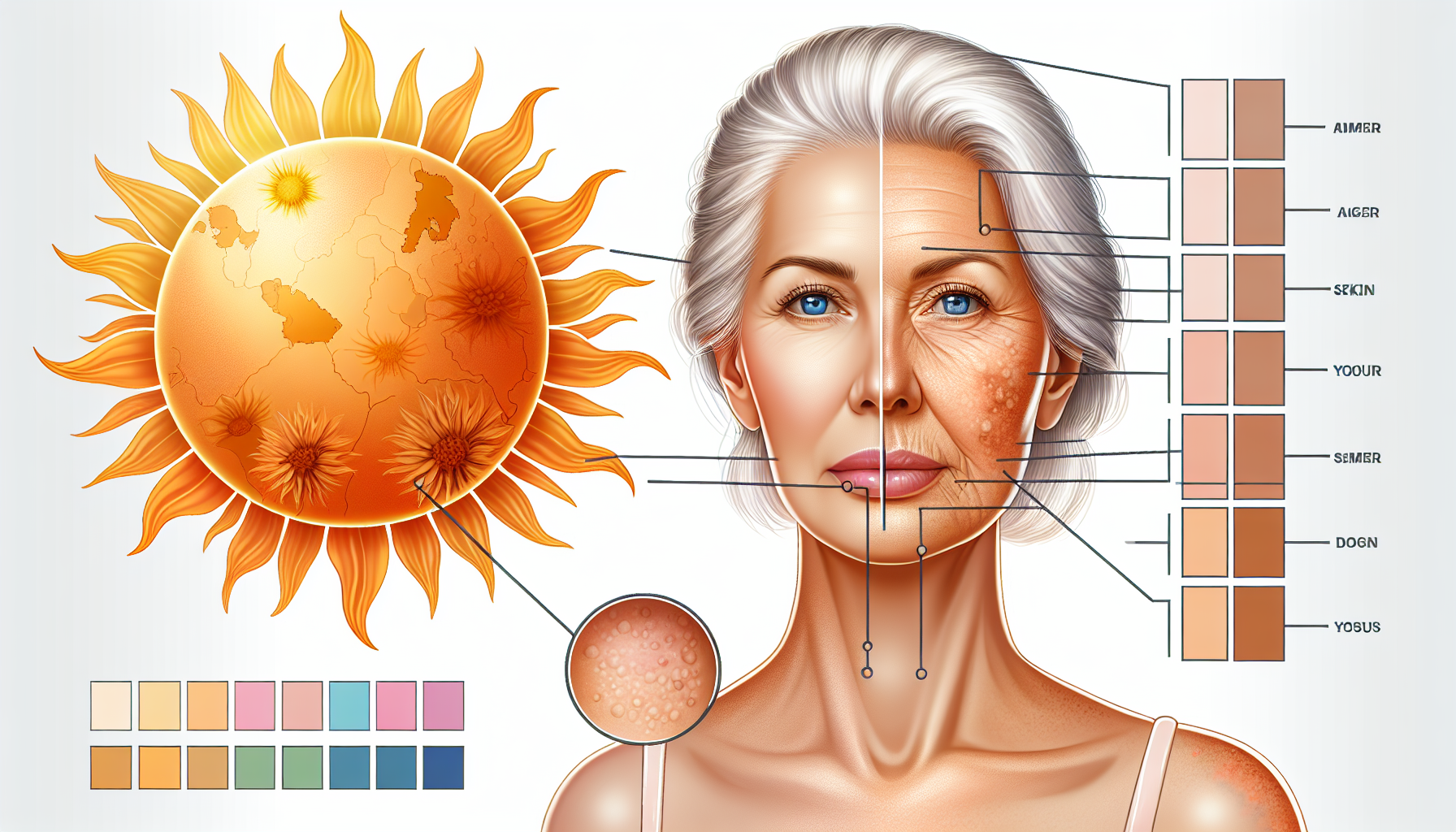
Prolongated UV exposure, especially in regions near the equator, is a notable risk factor for patients developing actinic keratosis. On the other hand, the onset of seborrheic keratosis is closely linked to the progression of age, usually manifesting after the age of 50.
What Causes Keratosis Pilaris?
The buildup of keratin in hair follicles that leads to keratosis pilaris occurs when keratin, a hard protein that protects the skin from harmful substances and infection, accumulates and blocks the openings of hair follicles. This condition is largely considered to be a genetic disorder affecting the skin’s process of keratinization, where the body produces excess keratin.
Several factors contribute to the development of keratosis pilaris, including:
- Skin Dryness: Keratosis pilaris is more common in individuals with dry skin, especially during the winter months when humidity is lower. Dry skin can exacerbate the buildup of keratin by reducing the skin’s ability to shed dead skin cells efficiently.
- Skin Conditions: People with certain skin conditions, such as eczema (atopic dermatitis), are more likely to develop keratosis pilaris. Eczema can increase skin dryness and irritation, which may contribute to the excessive buildup of keratin.
- Not Exfoliating: Exfoliating can help manage and reduce the symptoms of keratosis pilaris. Regular exfoliation helps to remove dead skin cells from the surface of the skin, which can prevent or minimize the clogging of hair follicles with keratin.
Gut Flora Effects the Whole Microbiome
Poor gut flora and microbiome health can contribute to various health issues, including skin conditions like keratosis. The gut microbiome plays a crucial role in overall health, impacting the immune system, inflammation, and the body’s ability to absorb nutrients. An imbalance in the gut microbiota, known as dysbiosis, has been linked to autoimmune problems, digestive issues, skin rashes, and allergies. This imbalance can lead to systemic inflammation, which may manifest in the skin as various conditions, including keratosis.
The gut microbiome is involved in the metabolism of certain nutrients and the production of short-chain fatty acids, which can influence skin health and inflammation. Poor gut health can also lead to increased permeability of the intestinal barrier, allowing potentially harmful substances to enter the bloodstream and contribute to systemic inflammation, which may impact the skin.
The Potential for Topical Application of Seaweed for Keratosis
Seaweed, a marine plant loaded with vitamins, minerals, and antioxidants, has been gaining attention for its potential benefits in treating skin conditions, including keratosis. Clinical investigations have been conducted to assess the efficacy of alginate extracted from brown seaweed in managing actinic keratosis, demonstrating promising results. Some potential benefits of seaweed for treating keratosis include:
- Providing essential nutrients to the skin
- Reducing inflammation
- Promoting skin cell regeneration
- Protecting against UV damage
While more research is needed, incorporating seaweed into your skincare routine may be worth considering for managing keratosis.
Seaweed’s anti-inflammatory properties can help alleviate the redness and inflammation associated with keratosis. Its topical application may also lead to an improved appearance of the skin by providing soothing effects. We’ll examine in more detail how seaweed can be harnessed for managing actinic keratosis and seborrheic keratosis.
Topical Seaweed for Actinic Keratosis Treatments
Seaweed effectively reduces inflammation and promotes skin healing in cases of actinic keratosis through its anti-inflammatory properties and the presence of phlorotannins, which serve as antioxidants. Topical seaweed application may help in treating actinic keratosis by reducing inflammation and promoting skin healing, similarly to the effects of topical fluorouracil.
Scientific research has indicated that seaweed exhibits potential for medical application in addressing acne and wrinkles. Ongoing investigations are exploring the photoprotective properties of specific seaweed species, which could have relevance for the management of actinic keratosis. However, potential side effects may include:
- skin irritation
- allergic contact dermatitis
- dryness
- redness
- peeling
Topical Seaweed for Seborrheic Keratosis Treatments
Seaweed provides hydration and nourishment to the skin affected by seborrheic keratosis by supplying essential vitamins, minerals, and fatty acids that aid in protecting against free radicals and sun damage, and maintaining the skin’s barrier.
Seaweed’s active compounds, such as fucoidan and fucoxanthin, provide the following benefits in the treatment of seborrheic keratosis:
- Anti-inflammatory
- Antioxidant
- Anti-cancer
- Anti-diabetic
- Anti-oxidative
- Neuroprotective
To utilize seaweed’s potential benefits, seaweed-based cream or lotion should be applied directly to the affected area, similar to other topical medications.
Prevention Tips for Keratosis
Keratosis prevention involves a composite approach of sun protection, routine skin examinations, and a healthy lifestyle. The most effective sun protection methods include the correct application of high SPF sun protection, the implementation of a comprehensive sun protection strategy, and the daily use of sunscreen with reapplication every 2 hours.
Skin exams for early diagnosis and detection of keratosis should be conducted annually as part of a regular health checkup. Individuals at higher risk may require more frequent exams.
Furthermore, maintaining a healthy lifestyle can help prevent keratosis by avoiding dry skin through a gentle skin care routine, staying hydrated, and protecting the skin from the sun.
Dermatologist Recommended Seaflora Products for Keratosis
Seaflora Skincare is known for its use of organic, wild-harvested seaweed and marine-based ingredients, which are rich in vitamins, minerals, and antioxidants beneficial for the skin.
Wild Rockweed Exfoliant and Oil-Free Seaweed Body Polish: Both of these products can provide gentle exfoliation, which is essential for removing dead skin cells and minimizing the appearance of keratosis pilaris bumps. The natural marine ingredients may also help to soothe and moisturize the skin.
Detoxifying Fucus Body Wash: A gentle, detoxifying body wash can help cleanse the skin without stripping it of natural oils, which is important for maintaining healthy skin, hydration and barrier function—key for managing keratosis pilaris.
Wild Sea Kelp Body Lotion: Moisturizing is crucial for softening the bumps associated with keratosis pilaris and keeping the skin barrier healthy. A lotion containing sea kelp, known for its hydrating and skin-nourishing properties, can help to moisturize and calm the skin.
Summary
In summary, keratosis, whether actinic or seborrheic, is a common skin condition characterized by abnormal growths or patches. While actinic keratosis is precancerous and can develop into skin cancer if left untreated, seborrheic keratosis is benign and usually does not require treatment unless it becomes irritated. Early detection and treatment are crucial, especially for actinic keratosis, to prevent any potential progression to skin cancer.
Preventing keratosis involves sun protection, regular skin exams, and maintaining a healthy lifestyle. Additionally, studies suggest the potential of topical application of seaweed for treating and managing keratosis offers a promising alternative. Remember, your skin is a reflection of your overall health. Hence, taking care of it should be a priority. Stay sun-smart, keep hydrated, and remember to check your skin regularly.
Frequently Asked Questions
How do you get rid of a keratosis?
There are various methods for removing keratosis, including cryotherapy, shaving excision, laser therapy, topical medications, and electrodesiccation with or without curettage. Home remedies may not effectively treat keratosis, so it’s important to consider professional treatment options.
What does a keratosis look like?
A keratosis can appear as round or oval-shaped bumps with a waxy or scaly texture, often described as having a “stuck on” appearance. It may be raised above the skin or have a flat, scaly surface, and can vary in size.
Can keratosis turn into cancer?
Yes, some actinic keratoses can turn into squamous cell skin cancer if not found and treated early, but they are not life-threatening. Early treatment can prevent them from developing into a cancerous one.
What is keratosis?
Keratosis is a skin condition that involves the growth of keratin on the skin or mucous membranes, leading to the formation of abnormal growths or patches of skin color.


